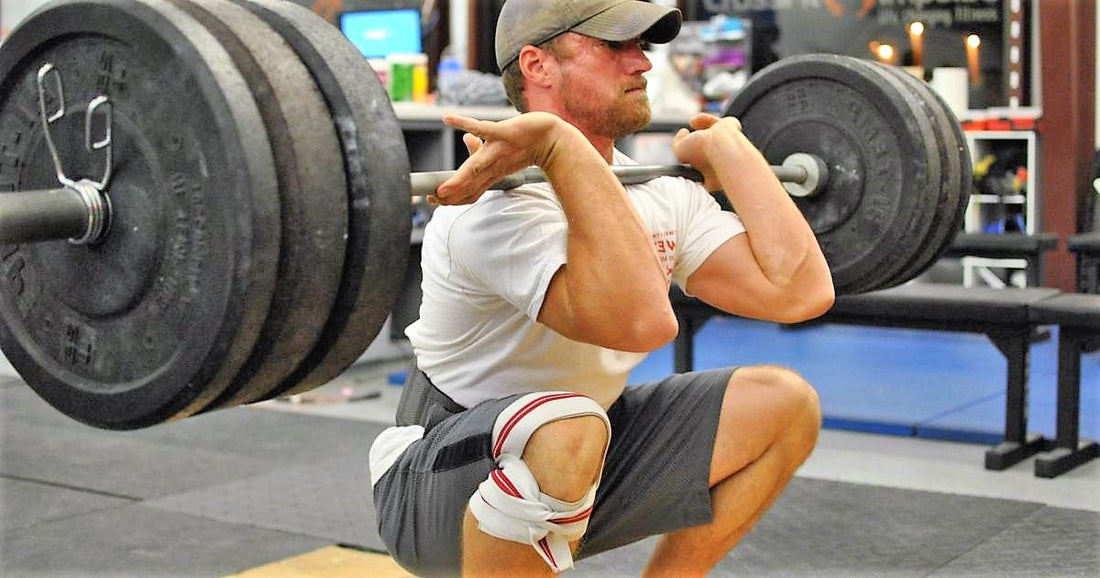
Smashing Sticking Points: A Guide to Powerlifting Lift Variations
Every powerlifter knows the feeling: the bar moves smoothly, then hits an invisible wall. That "wall" is your sticking point, the specific part of a lift's range of motion where you are biomechanically weakest. While general accessory work is important, the most direct way to attack a sticking point is by using specific lift variations that overload that exact range of motion. This guide will detail the best lift variations to smash through common sticking points in the squat, bench press, and deadlift.

The Principle: Overload the Weakness
The strategy is simple: find where you fail, and then find a lift variation that makes that specific portion of the lift harder. By strengthening the weakest link in the chain, the entire chain becomes stronger. This targeted approach is a cornerstone of advanced programming used by top coaches and athletes.
Bench Press Sticking Points & Variations
If You Fail Off the Chest (Bottom-End Strength)
-
Spoto Press: This is a bench press where you lower the bar and pause it 1-2 inches above your chest, hold for a count, and then press back up.
- Why it Works: It removes the momentum and stretch reflex from the very bottom of the press, forcing you to generate immense starting strength and maintain full-body tightness. It's a favorite of many raw benchers for this reason.
-
Larsen Press: A bench press performed with your feet up in the air or straight out, removing leg drive entirely.
- Why it Works: It isolates your upper body pressing muscles and punishes any instability. It forces you to rely purely on the strength of your chest, shoulders, and triceps to move the weight.
If You Fail at Lockout (Mid-Range/Top-End Strength)
-
Board Press: By placing 1-4 boards on your chest, you shorten the range of motion and start the press from your sticking point.
- Why it Works: It allows you to overload the triceps and shoulders with weight you couldn't handle for a full range of motion, directly strengthening the lockout.
-
Pin Press: Set the safety pins in a power rack to your sticking point and press the bar from a dead stop.
- Why it Works: Similar to a board press, but it completely removes the eccentric (lowering) phase and stretch reflex, building pure concentric strength.
Squat Sticking Points & Variations
If You Fail Out of the Hole (Bottom-End Strength)
-
Pin Squat: Set the safety pins so the bar rests on them at the bottom of your squat. Get under the bar, get tight, and squat up from a dead stop.
- Why it Works: Like the pin press, it builds incredible starting strength by removing all momentum. It's a pure test of your ability to generate force from the most difficult position.
- Paused Squats: A classic for a reason. A long pause (3-5 seconds) in the bottom of the squat forces you to maintain tightness and builds strength where you need it most.
If You Fail Mid-Way Up
- Box Squats: The box squat teaches you to sit back and powerfully engage your posterior chain (glutes and hamstrings), which is often the key to driving through the mid-range.
- Squats with Bands or Chains: Accommodating resistance makes the weight heavier at the top of the lift, forcing you to accelerate through the entire range of motion and strengthening your lockout.
Deadlift Sticking Points & Variations
If You Fail to Break the Floor (Starting Strength)
-
Deficit Deadlifts: Stand on a low platform or plate (1-3 inches) to increase the range of motion.
- Why it Works: It forces you to use more leg drive and builds immense strength in the starting position. As explained by experts at BarBend, it's a potent tool for improving your pull from the floor.
-
Paused Deadlifts: Pause the bar 1-2 inches off the floor for a 2-3 second count.
- Why it Works: It teaches you to maintain your back position and stay over the bar during the most critical phase of the lift.
If You Fail at Lockout (Above the Knees)
-
Rack Pulls / Block Pulls: Start the deadlift with the bar elevated on blocks or rack pins to just below your knees.
- Why it Works: This allows you to overload your upper back and glutes with supramaximal weight, directly training the muscles responsible for a powerful lockout.
- Good Mornings: An excellent accessory for building the spinal erector and hamstring strength needed to finish a heavy pull without rounding your back.
Stop banging your head against the same sticking points. By diagnosing where you fail and intelligently incorporating these specific lift variations into your training, you can directly attack your weaknesses. This targeted, problem-solving approach is a hallmark of smart powerlifting and the key to unlocking your next level of strength.
What lift variation has helped you the most with a sticking point? Share your secret weapon in the comments!








